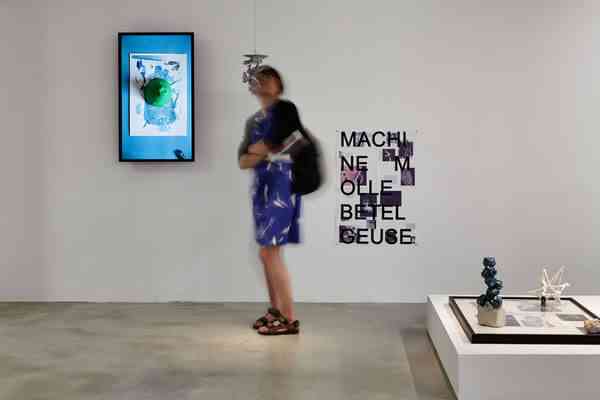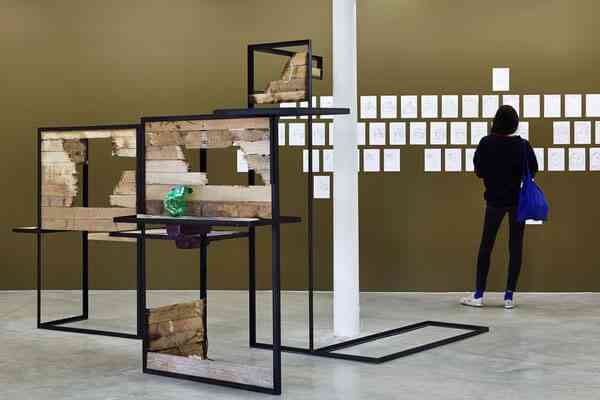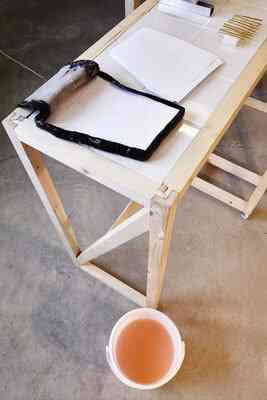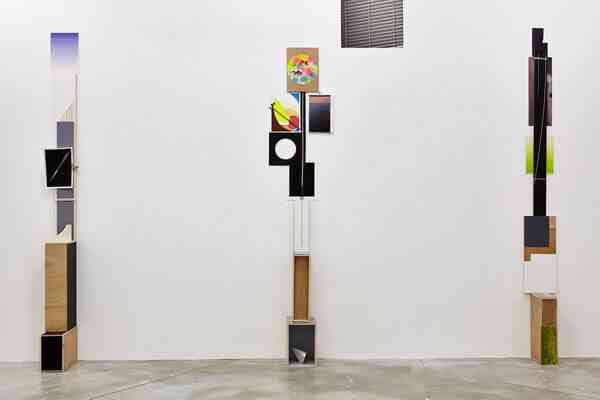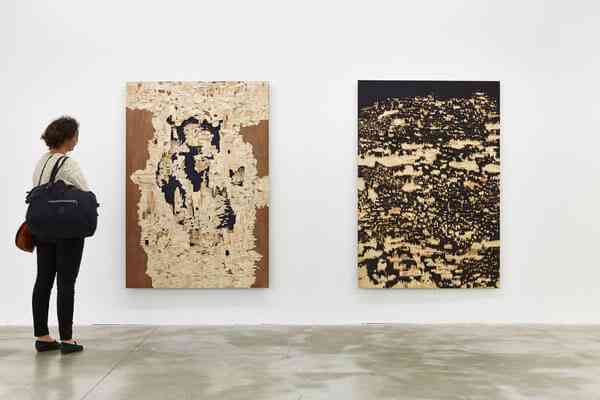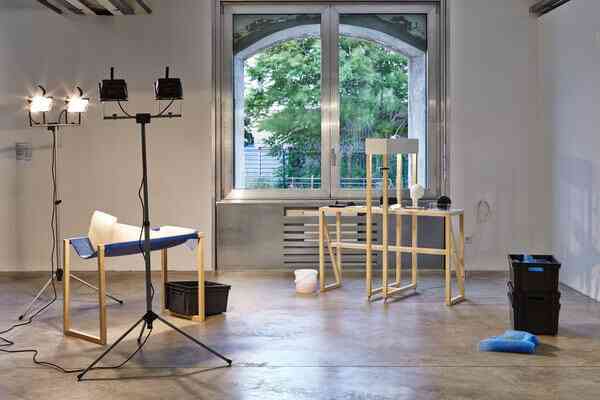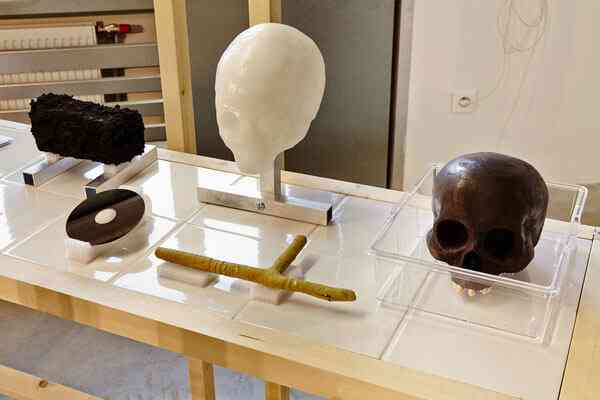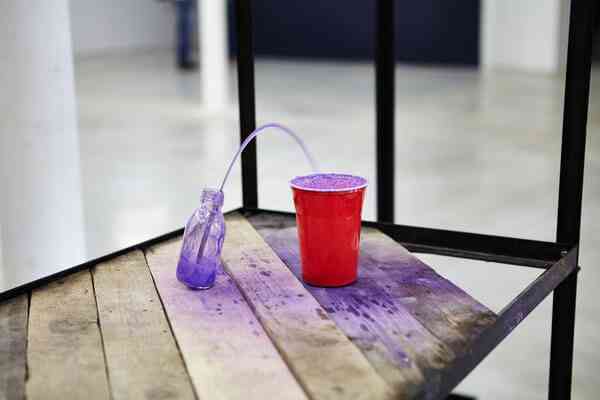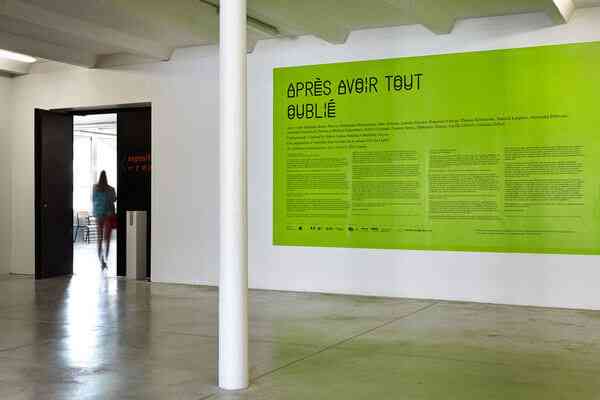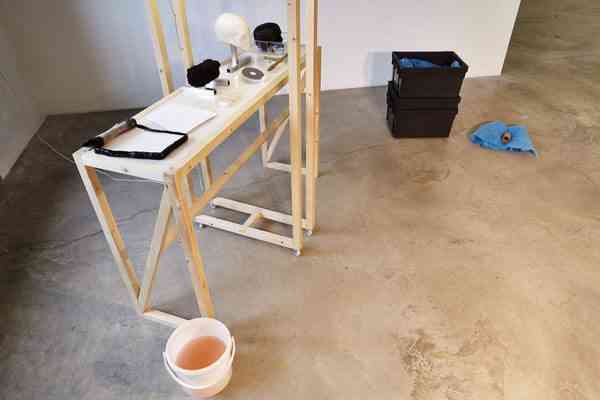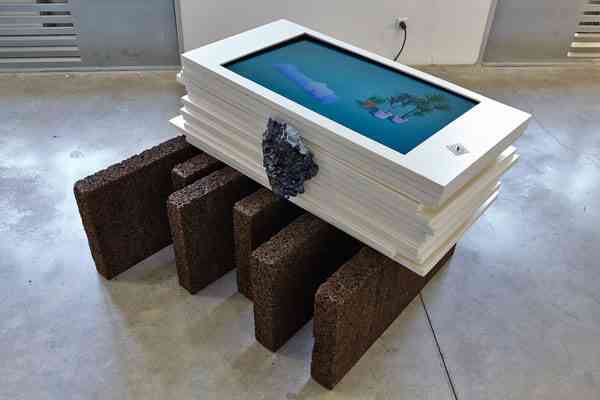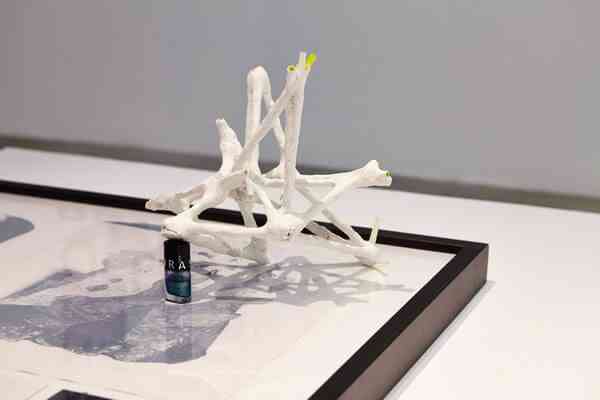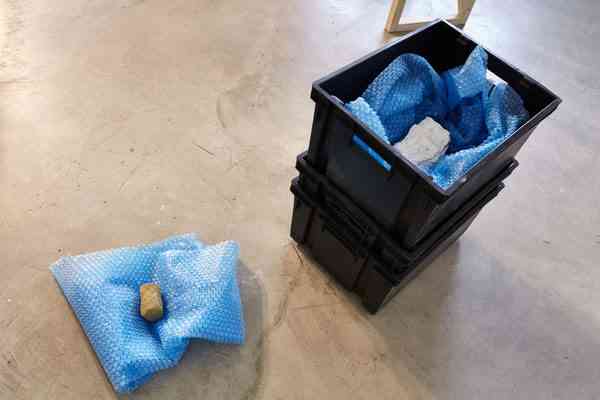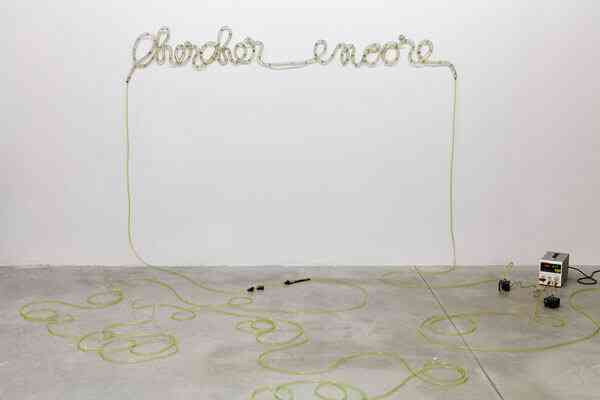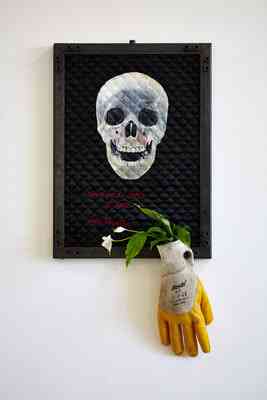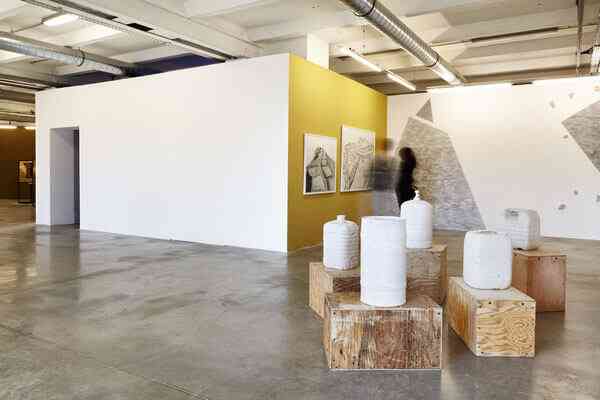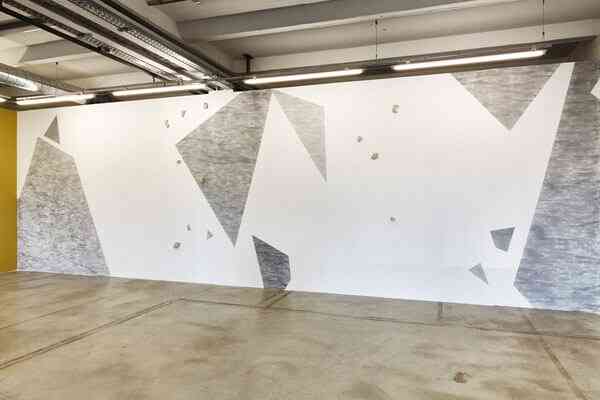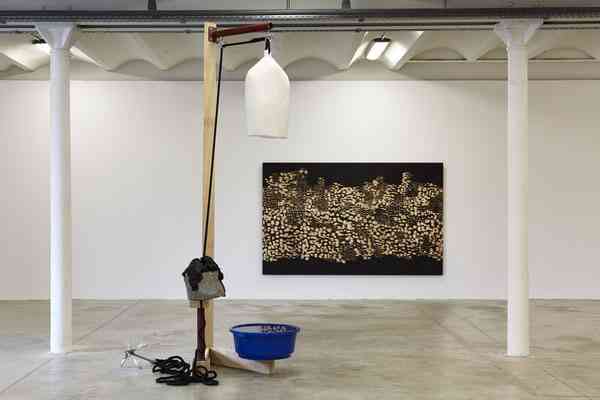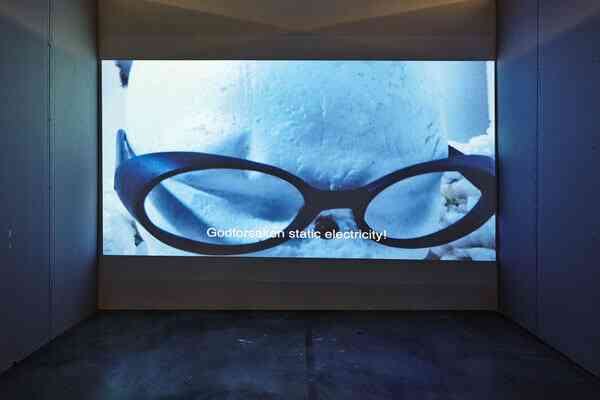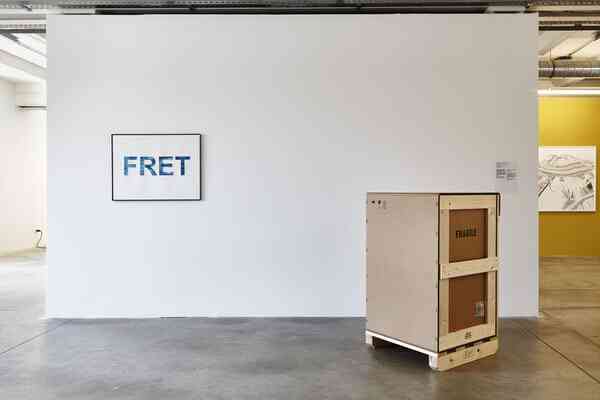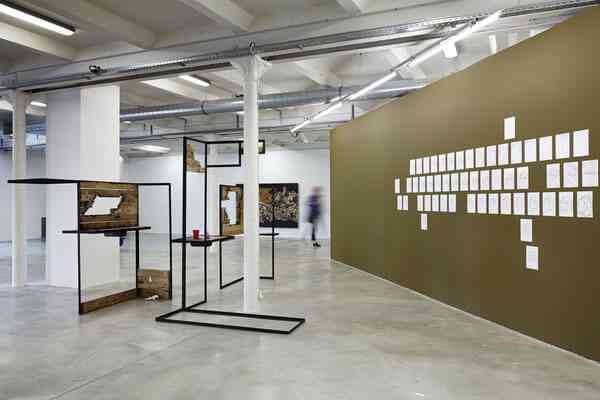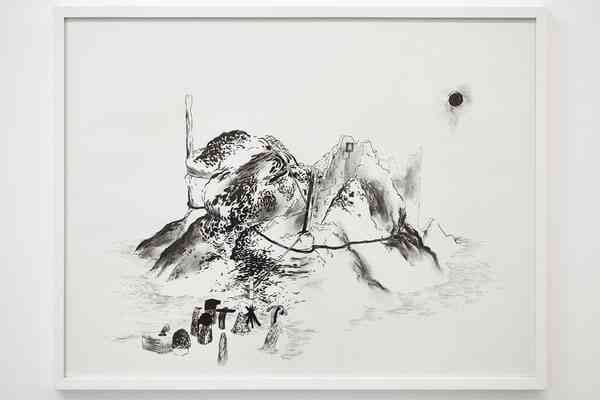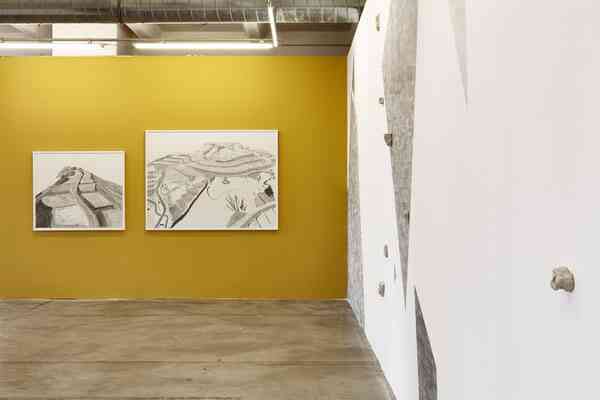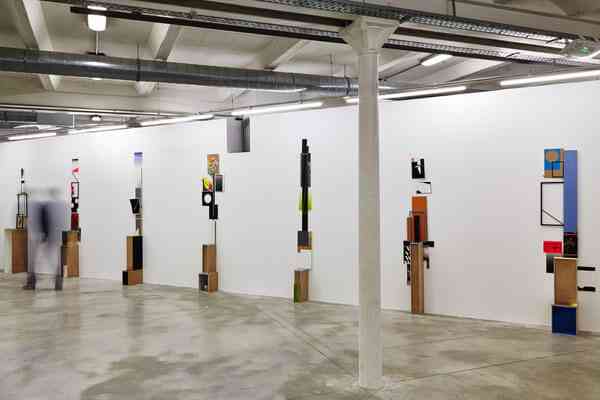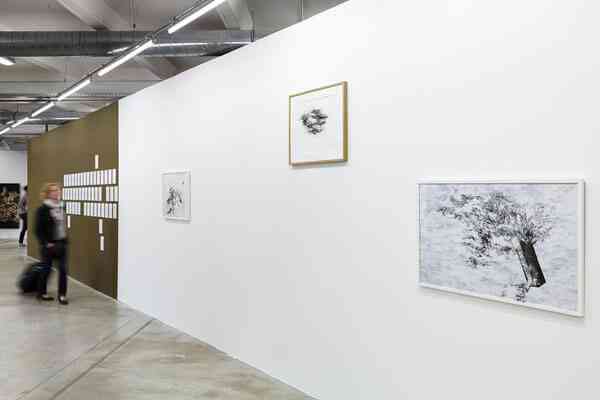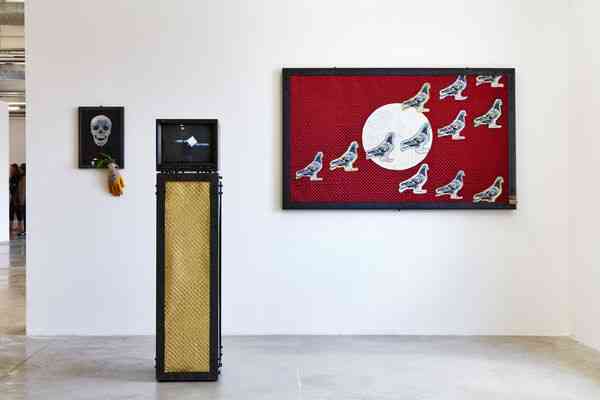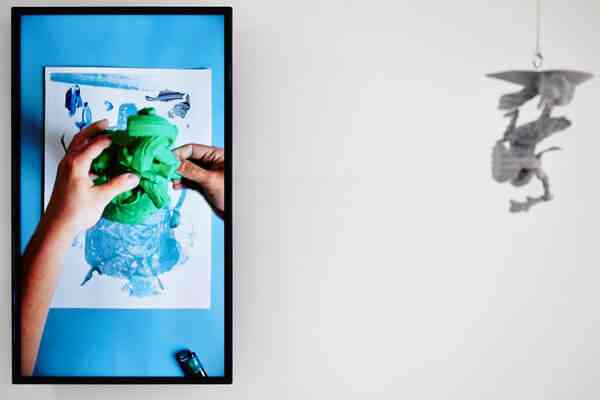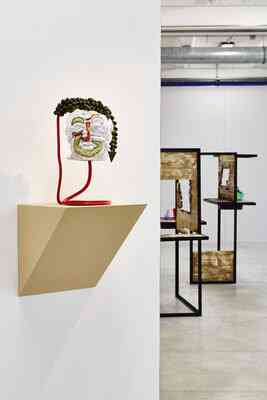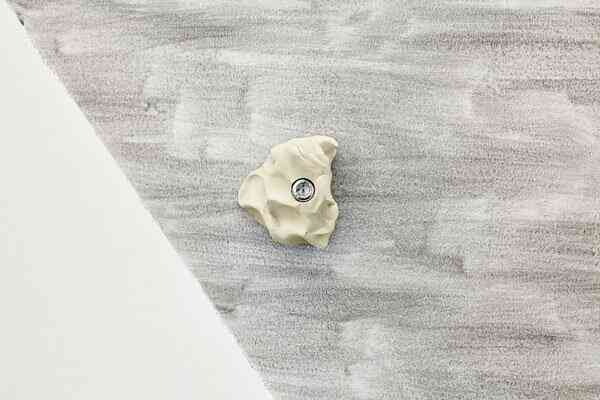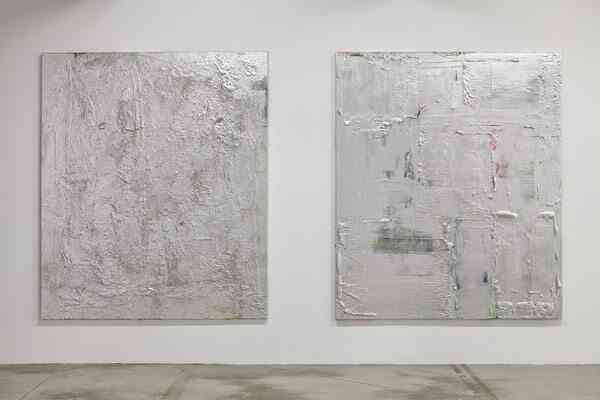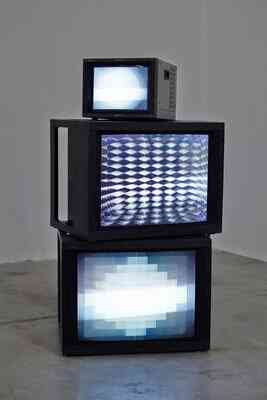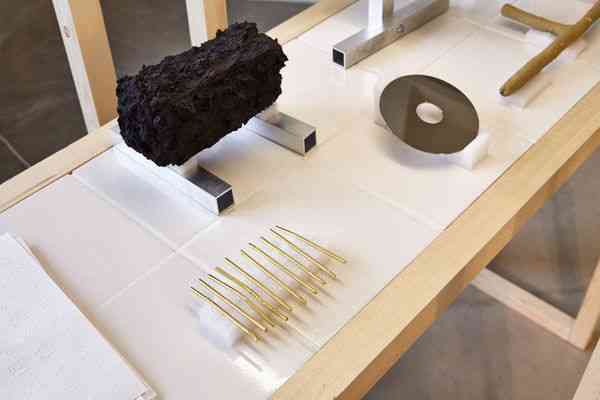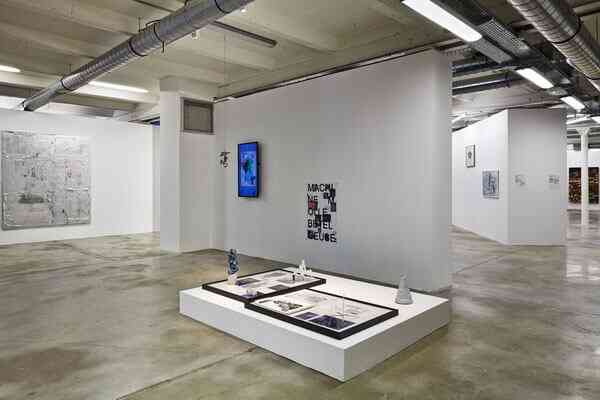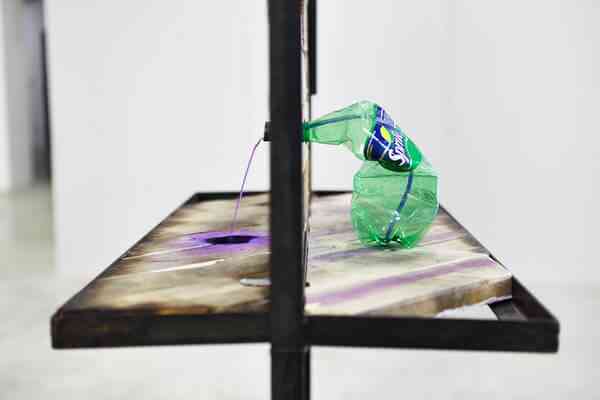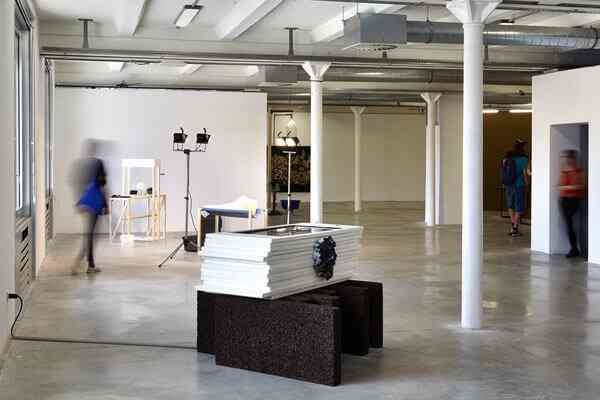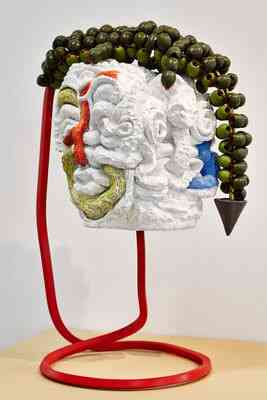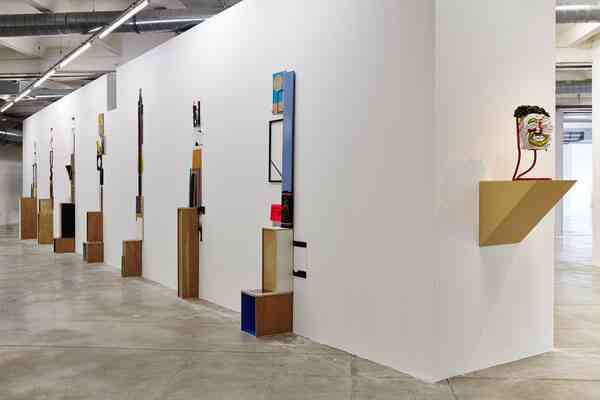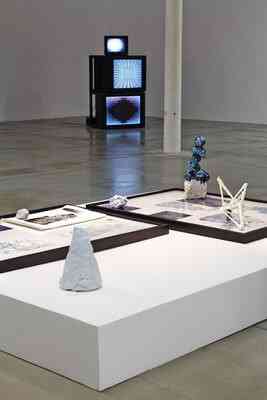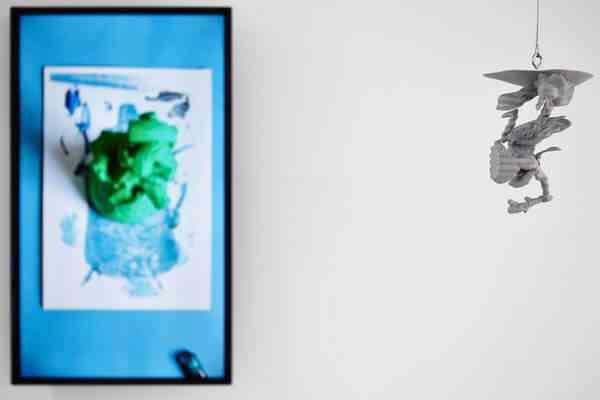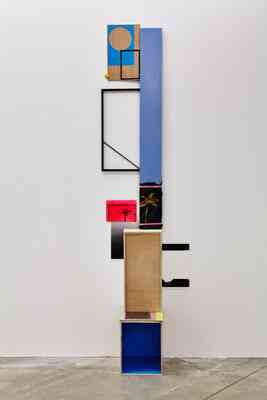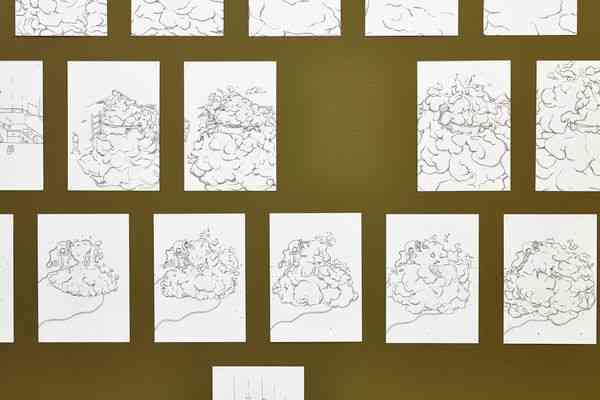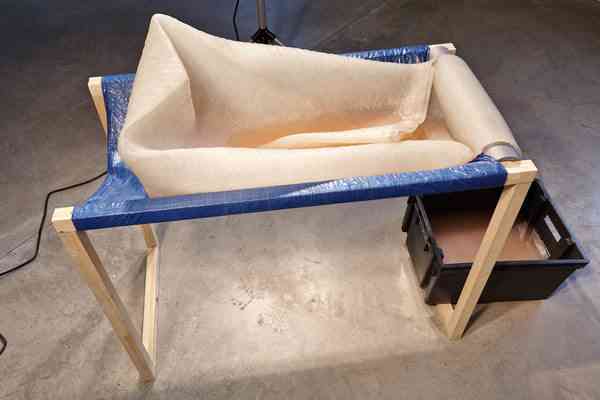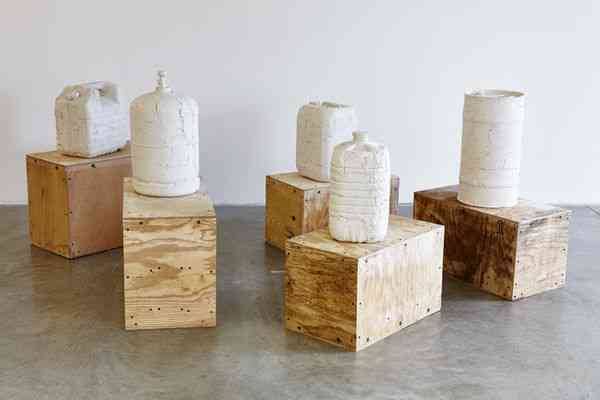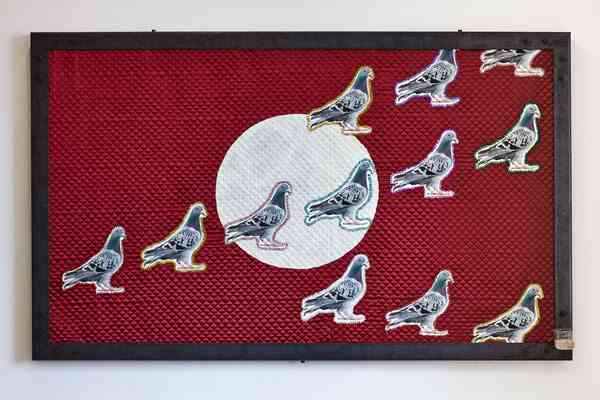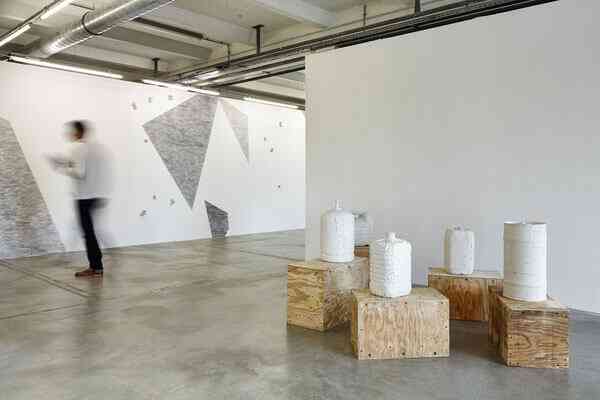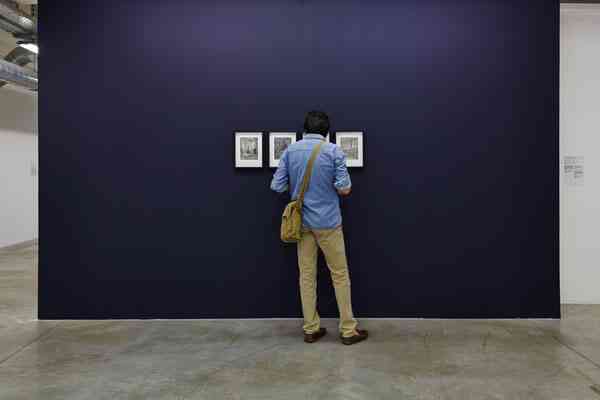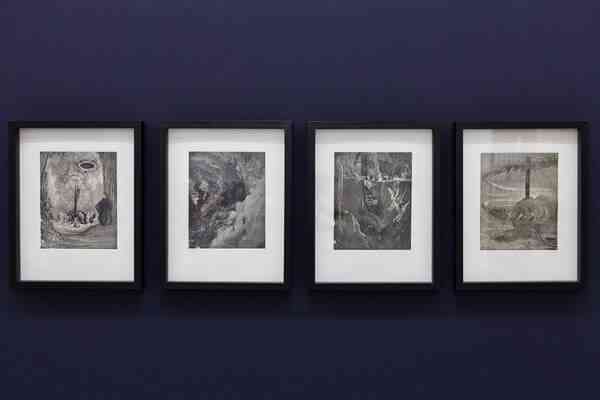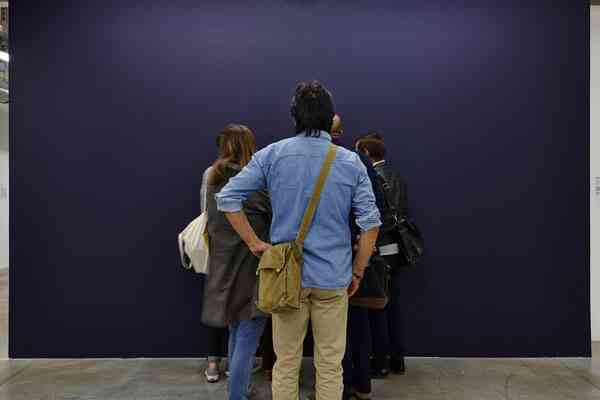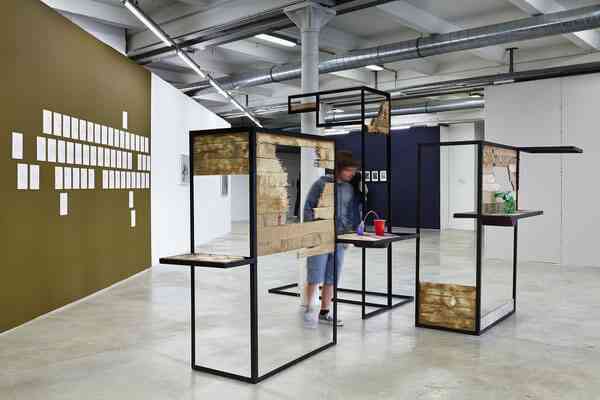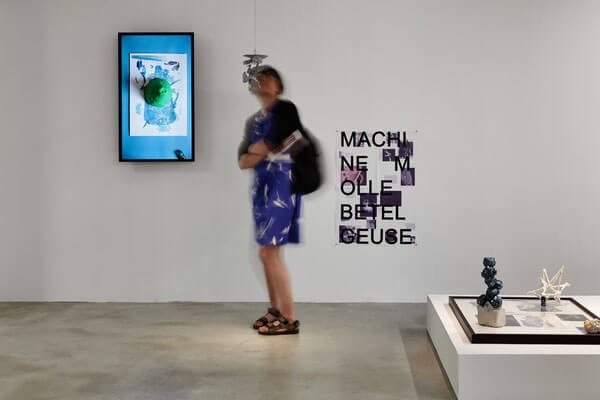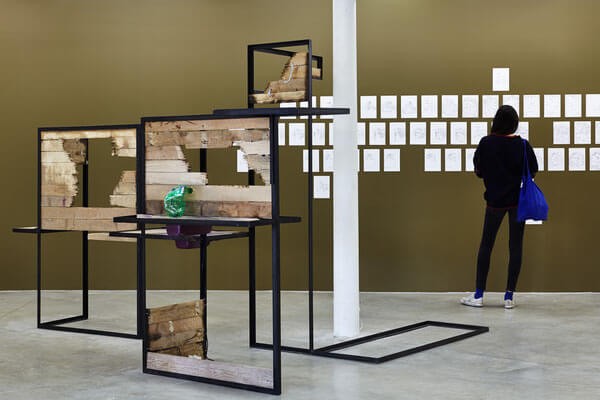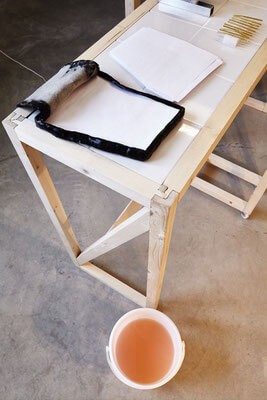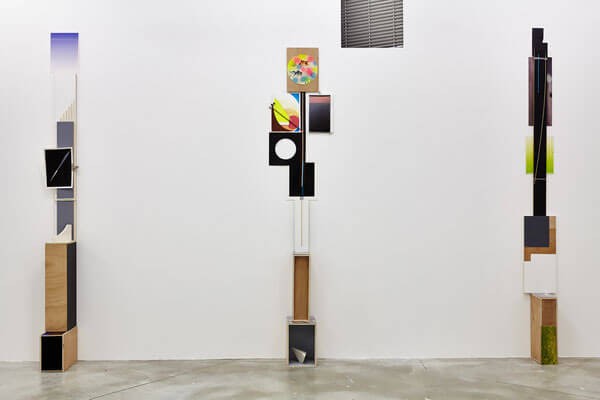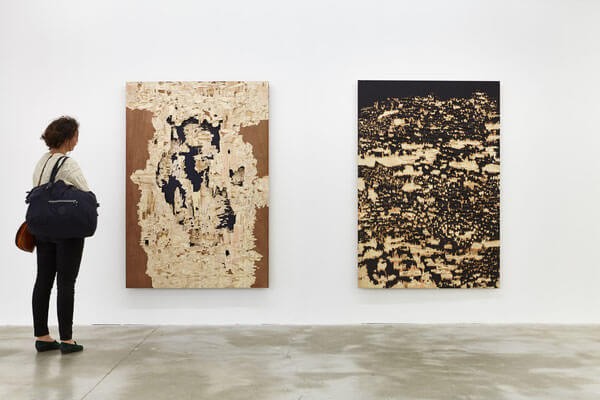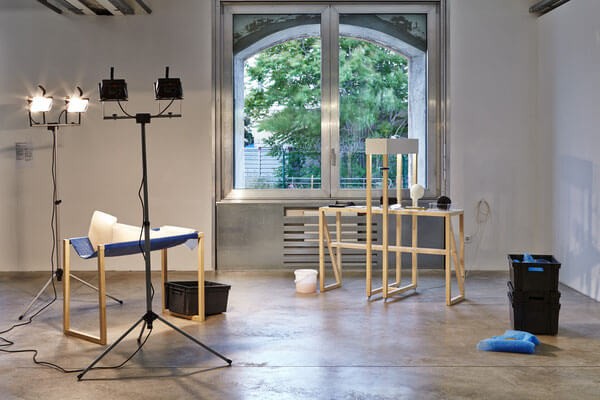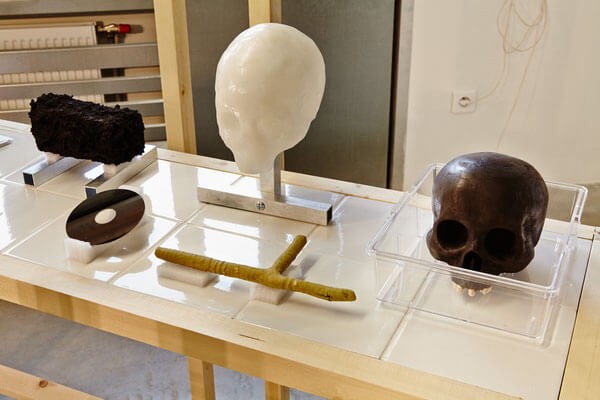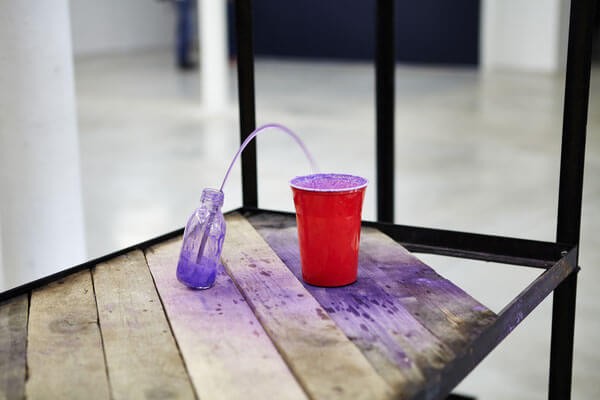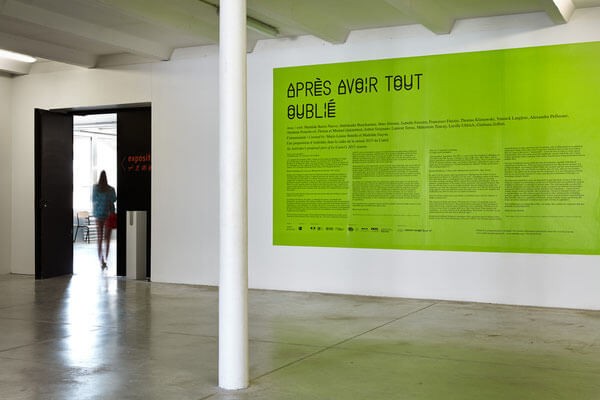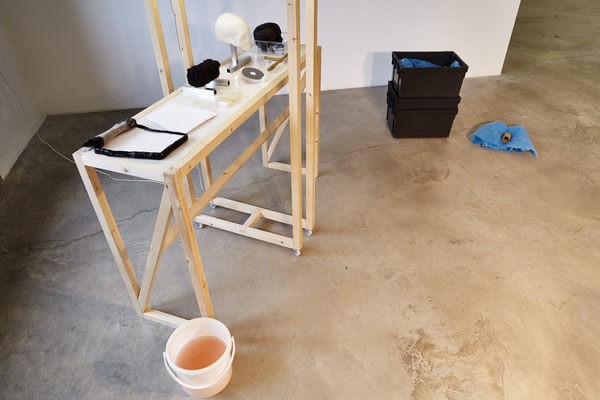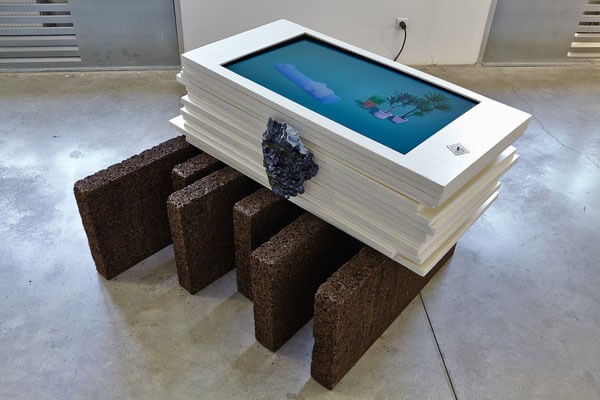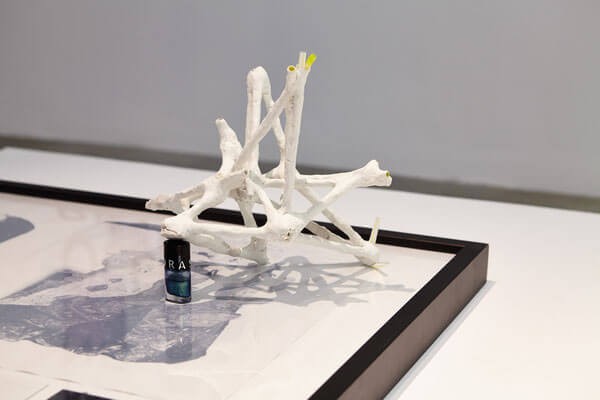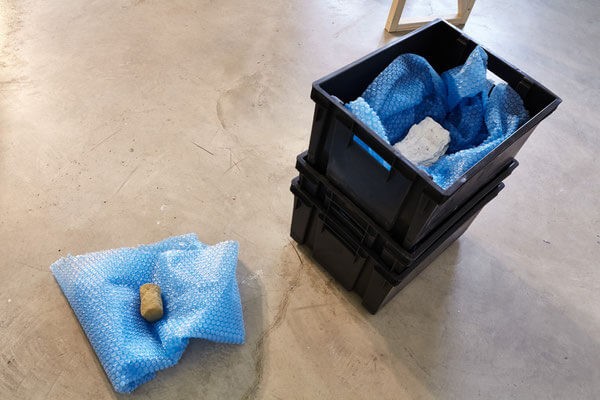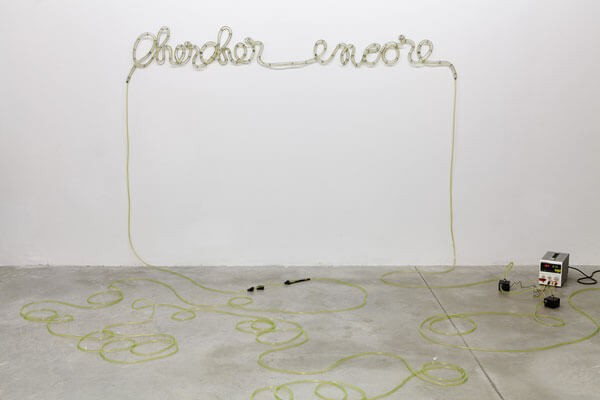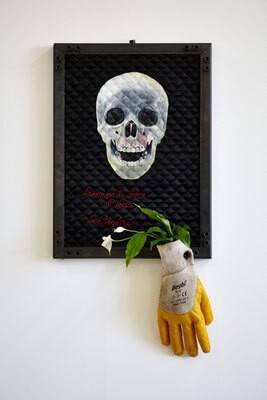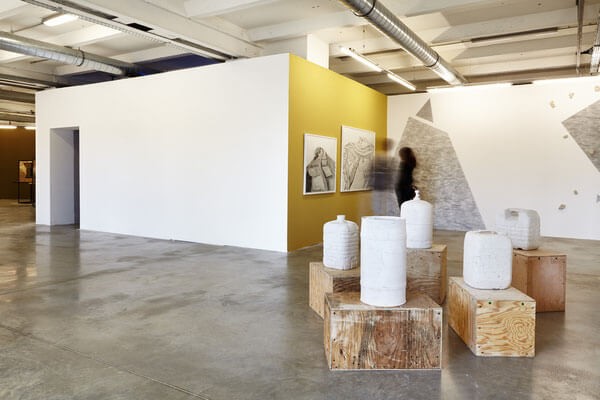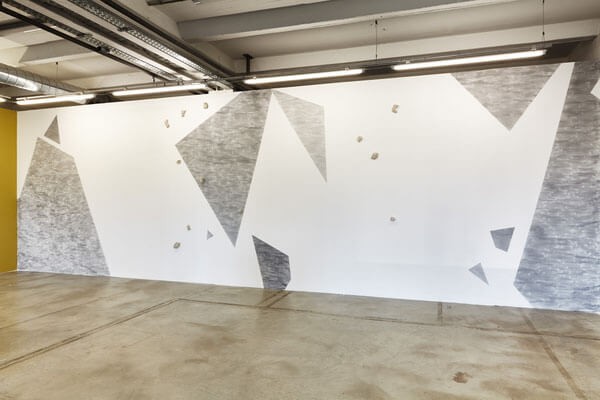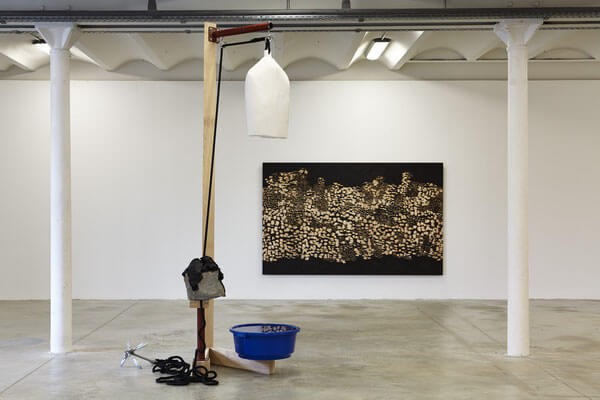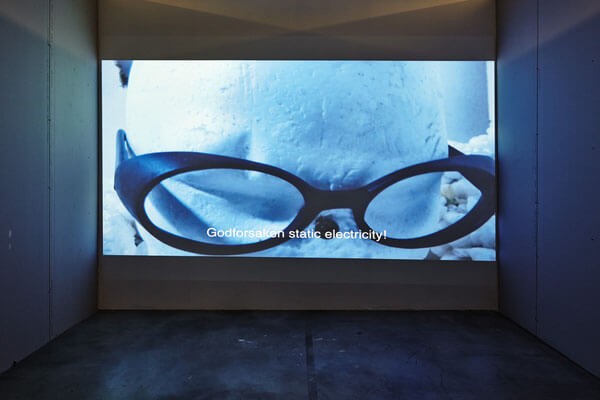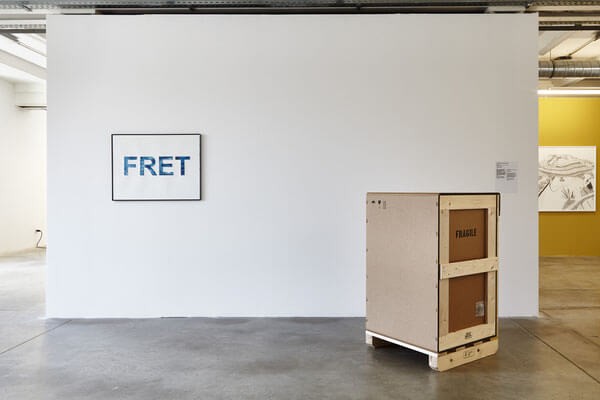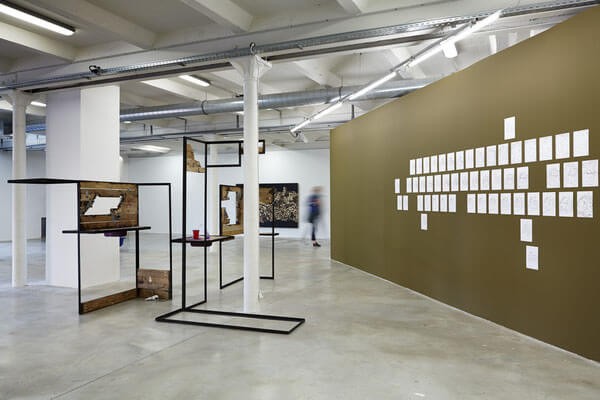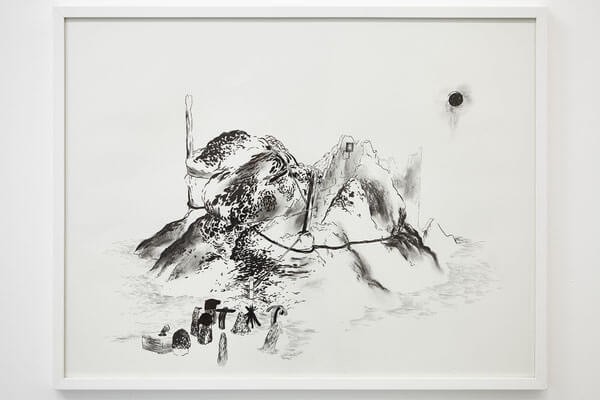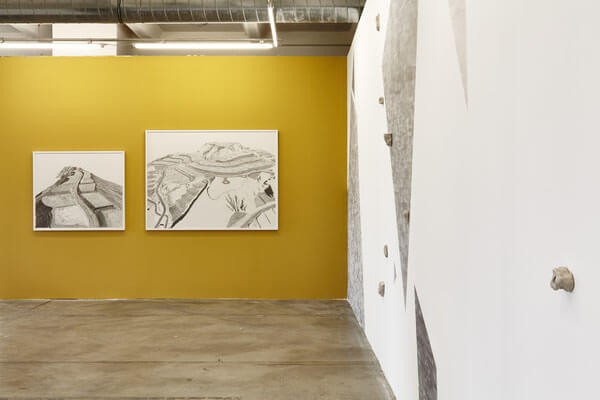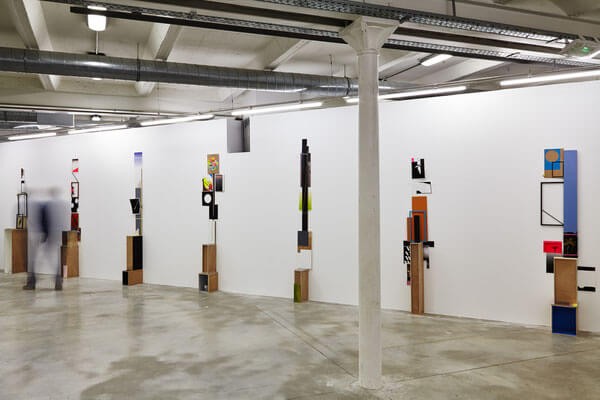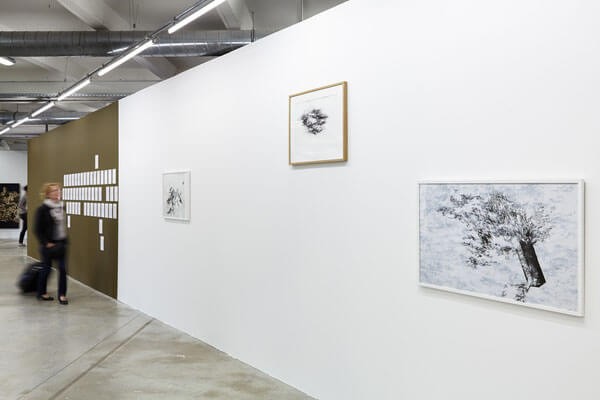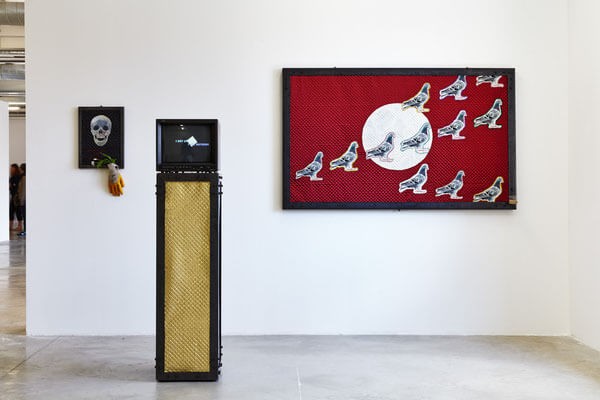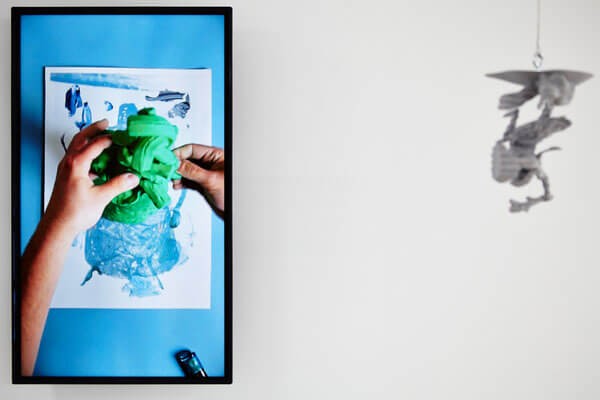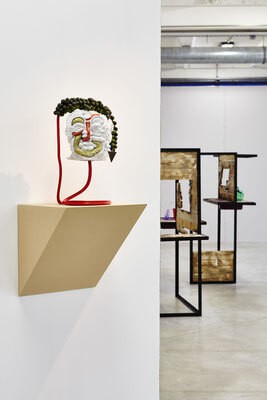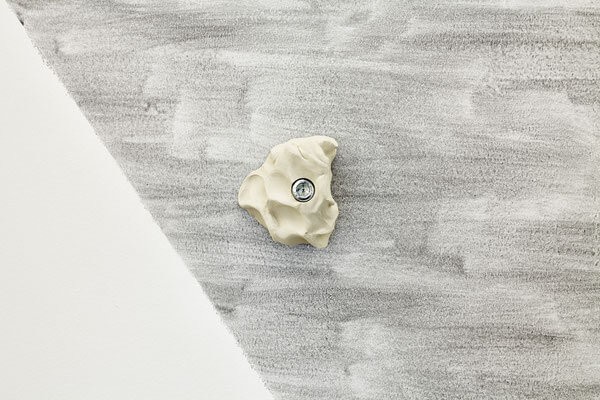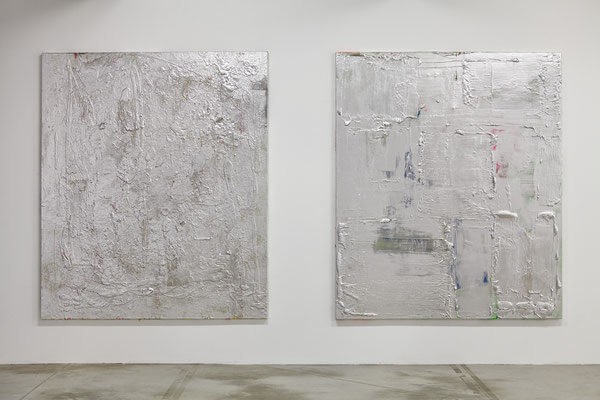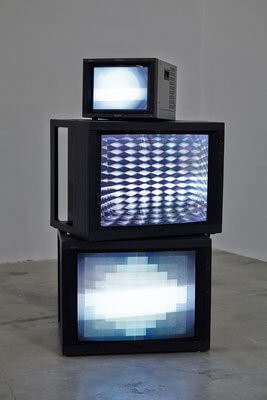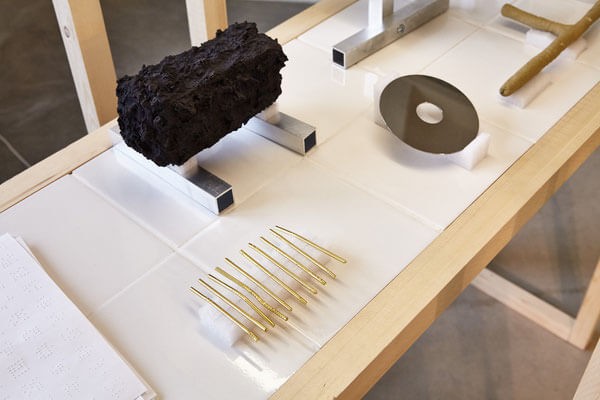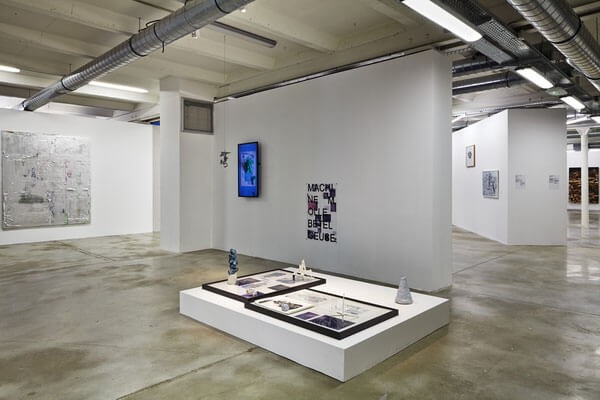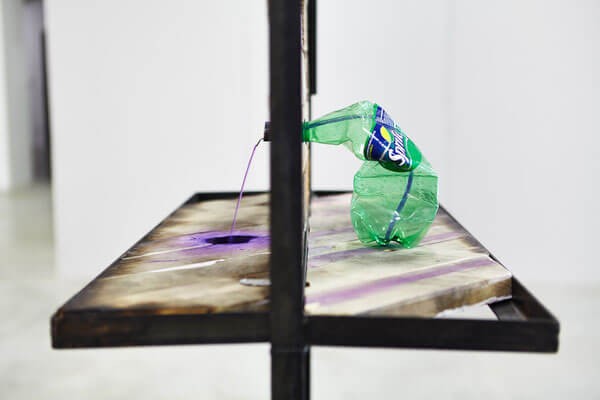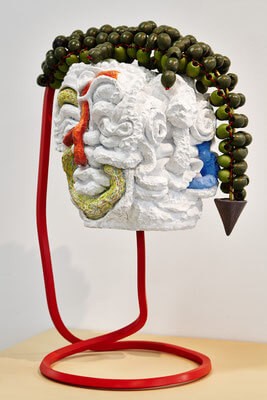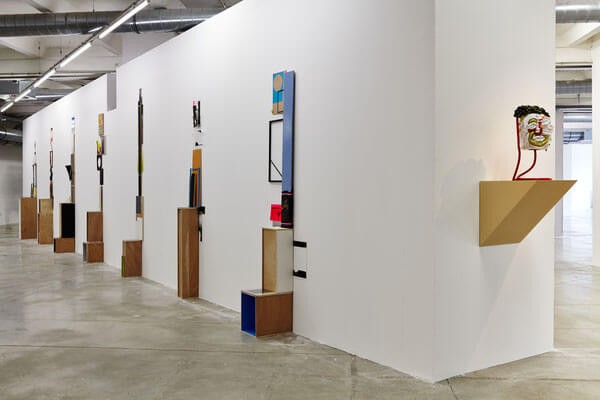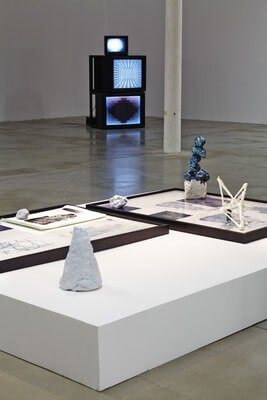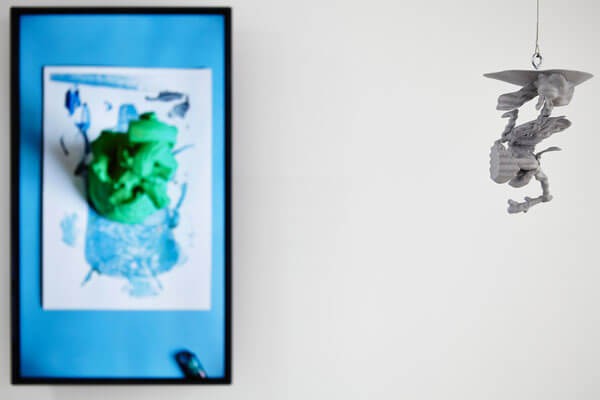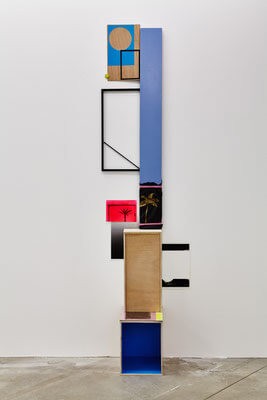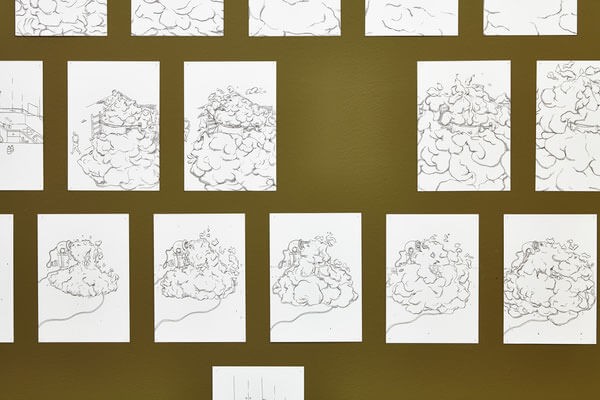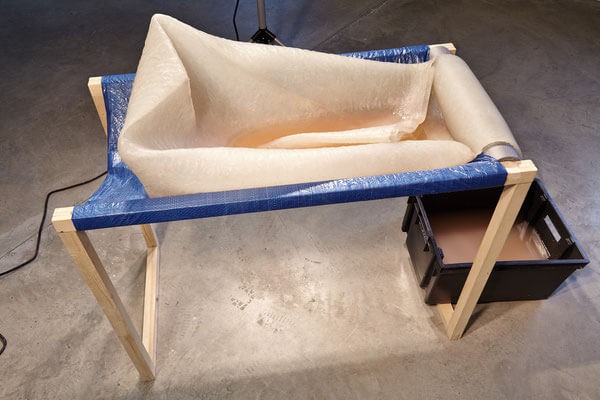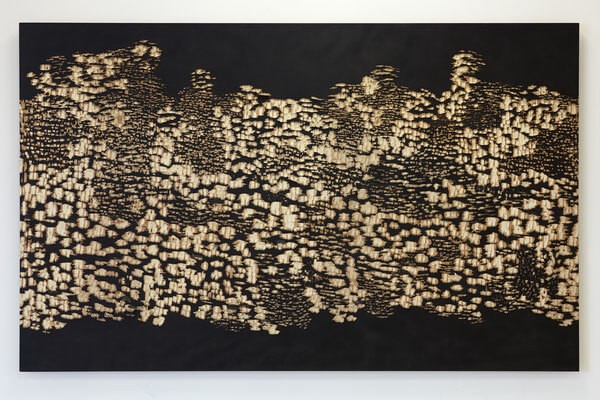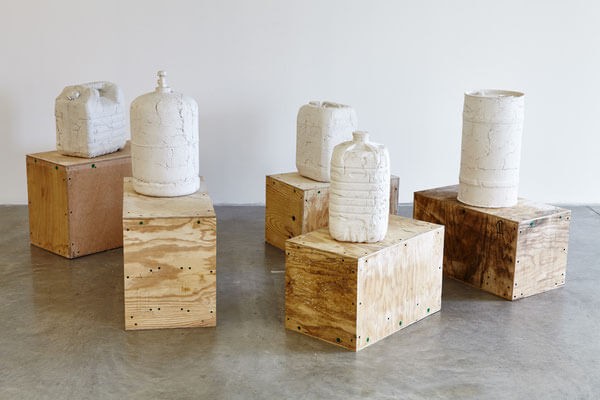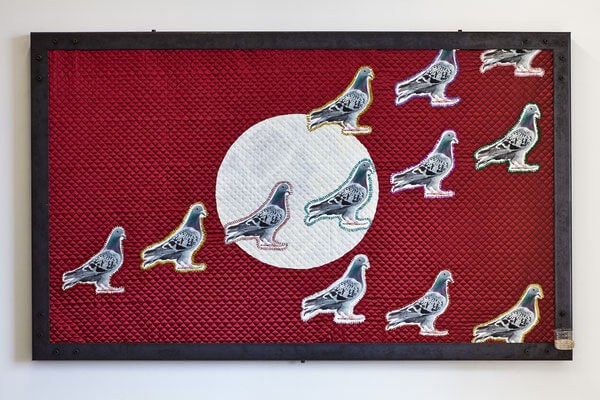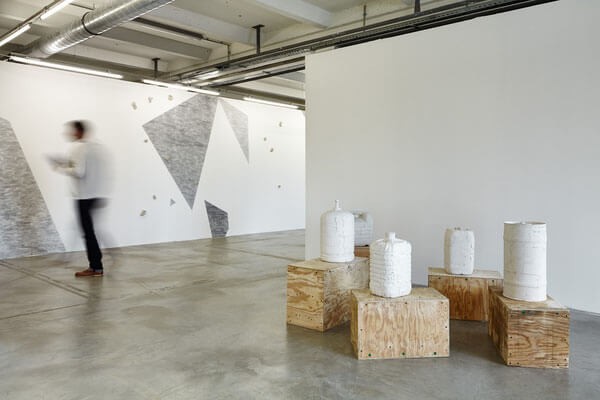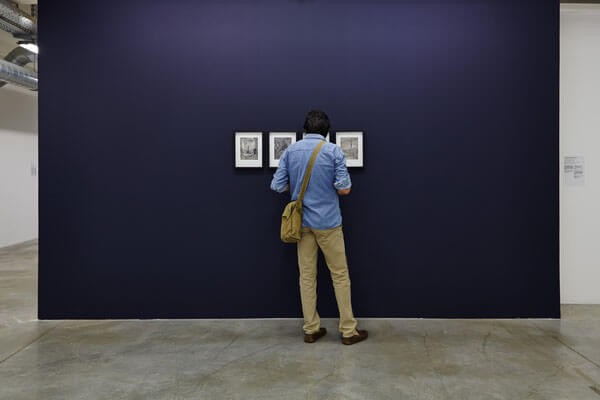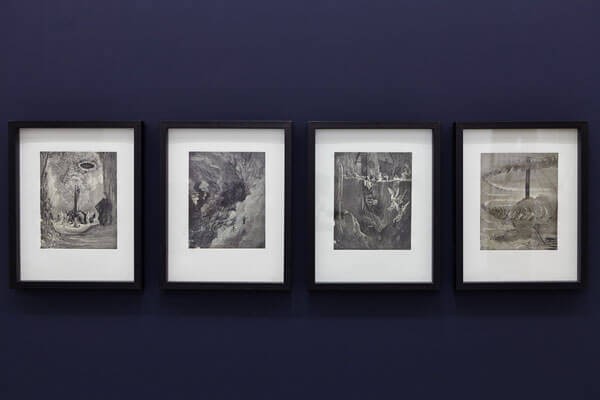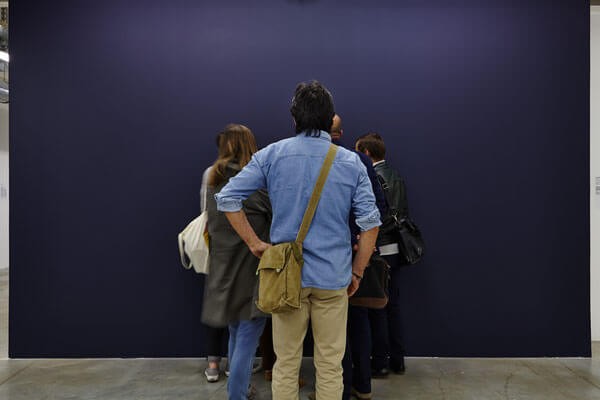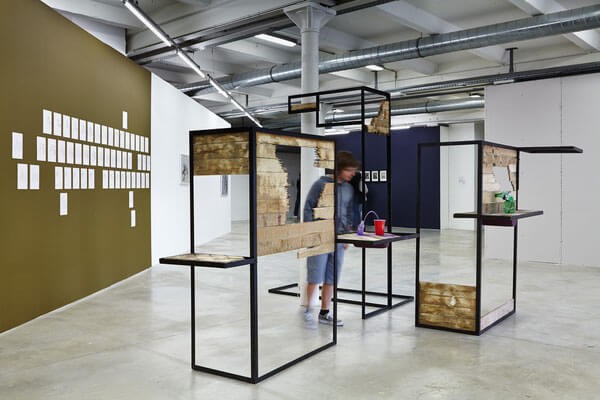Après avoir tout oublié [After having forgotten everything]
Collective show with Mathilde Barrio Nuevo, Abdelkader Benchamma, Marc Etienne, Isabelle Ferreira, Francesco Finizio, Thomas Klimowski, Yannick Langlois, Alexandra Pellissier, Abraham Poincheval, Florian et Michael Quistrebert, Arthur Sirignano, Laurent Terras, Mükerrem Tuncay, Lucille Uhlrich et Giuliana Zefferi
As part of 2015 Cartel’s season
Partners: Ministry of Culture - Regional Directorate of Cultural Affairs Provence-Alpes-Côte d’Azur, Regional Council of Provence-Alpes-Côte d’Azur, General Council of Bouches-du-Rhône, City of Marseille, Ricard Corporate Foundation, Caparol, Chateau La Coste, Hôtel La Résidence, Picto Méditerranée.
Media partners: Les Inrockuptibles, ParisArt, Le Quotidien de l’Art, Zibeline.
May 14 - September 6, 2015, public opening on Wednesday, May 13
2nd floor of the Tour-Panorama, Friche la Belle de Mai, Marseille
After having forgotten everything,
it seems that we need a prompter.
“On Saturday, September 30, 1967, I went to the Port Authority Building at the corner of 41st Street and 8th Avenue. I bought the New York Times and Earthwork by Brian W. Aldiss in Signet paperback. Then I went to ticket counter 21 and asked for a one-way ticket to Passaic. I then climbed to the Bus level (bay 173) and boarded the 30 of the Inter-City Transportation Co.”
Robert Smithson, A Visit to the Monuments of Passaic, New Jersey
Despite all the energy, generosity, and talent of the artists in residence at Astérides over the years, it appears that everything still remains to be done. Time has fractured, everything has been forgotten. The artists show cunning, pedagogy, compassion, empathy, and patience. They are teachers, archaeologists of the future, caregivers, gardeners, mediators. But how far can they go to make us relive these moments buried deep within our memory when the expansion of the cosmos seems assured? We must catch glimpses of clues and continuously retrace the same path in order to find something tangible, something understandable, upon which we can pause.
How far will the artists have to go for us to finally have a revelation, and for memory to return to us?
The memory of things, objects. The memory of shapes. The memory of events. People themselves seem to have dissolved into a recent past. A time that has accelerated exponentially has made regular counting impossible. The experiences have multiplied. No matter where we turn, we see what we might call fate, or the expansion, or on the contrary the backpedaling of time. In doing so, we feel ourselves moving with time itself and the space related to it.
If we return to the narrative that American artist Robert Smithson made in 1967, of his visit to the city of Passaic (New Jersey), in a “Tour of the Monuments of Passaic” (1967)*, we see him taking the measure of the intensification of the urban phenomenon in the United States, and the undifferentiated nature of this American suburban landscape in which one becomes lost. He then invites us to follow him on a visit to the “monuments,” scattered construction elements which he defines as such. He makes them landmarks, on which circulation arteries and urban fabric can then latch, before dissolving them or reabsorbing them into the incessant flow.
The advent of industrial ruin, which signifies the end of this modernity, but also that of aesthetic modernism. These decomposing monuments are already the remains of a vanished empire. According to Paul Virilio, modernity was organized by expectation: that of revolution, then war, and now the expectation of catastrophe. Catastrophe is the alpha and omega of our civilization. It becomes obvious that we are destroying the ruins of the future, and that the monuments of the past are becoming the strategic targets.
The artists here have been immersed in pop, punk, and later cultures, and are permeated by the reminiscences, the loss of illusions, and the sometimes cynical pretension of wanting to reinvent a world that is forever gone. The web partially restores it, providing distorted images from the ’80s, stemming from obsolete technologies, cheap material effects, and repetitions, visions of a waking dream, artificial glimmerings, fake animations, celestial worlds, and science fiction, mental things, etc. The artists project themselves into a future where artifacts wander and seem to get lost between post-industrial visions and pre-internet representations, remnants of a vanished civilization or in a past that promises the future, the third industrial revolution, and a new version of capitalism.
An exhibition that presents itself like a film or rather like a trailer for a catastrophe that has probably already happened.
Marie-Louise Botella
*Robert Smithson, “A Visit to the Monuments of Passaic, New Jersey”, published under the title “The Monuments of Passaic” in Artforum, December 1967.
